In the Choanal atresia it is a congenital malformation at the transition from the nose to the throat. Rapid therapeutic measures are often important.
What is choanal atresia?

© golubovy - stock.adobe.com
Choanal atresia is a complete closure of the posterior nostril that exists from birth. The rear nostril (consisting of the paired choanals) represents the transition between the nasal and pharynx.
Due to the paired structure of the nasal opening, choanal atresia can be unilateral or bilateral. In the vast majority of cases, choanal atresia occurs unilaterally. In most cases of choanal atresia, the occlusion of the nostril is bony, while in rare cases it can also take the form of a membrane.
According to the medical definition, choanal atresia is a malformation and occurs comparatively rarely.
Since infants up to about 6 weeks old can only breathe in through the mouth to a very limited extent, bilateral choanal atresia often leads to severe shortness of breath, especially when drinking. A possible symptom of unilateral choanal atresia is the leakage of purulent mucus from the affected nostril.
causes
Usually, choanal atresia is due to a disruption during embryonic development. The posterior nasal opening is formed between the 3rd and 7th week of embryo; if this development is disturbed, choanal atresia is a possible consequence. The type of developmental disorder present determines whether the later choanal atresia is of a bony or membranous structure.
You can find your medication here
➔ Medication for shortness of breath and lung problemsSymptoms, ailments & signs
Typical signs of choanal atresia include complete closure of the posterior nostril. This results in complaints such as shortness of breath, secretions from the nose and mouth and dominant mouth breathing. Due to the inadequate nasal breathing, affected infants suffer from shortness of breath when drinking, which can result in reduced food intake.
Breathing pauses can occur, which is a life-threatening complication, especially in severe choanal atresia. Outward signs of the malformation are the noticeable mouth breathing and the paleness. Often the skin is waxy and the eye sockets are sunken. In unilateral choanal atresia, the turbinates are bluish in color.
The signs of a unilateral disease often only appear after days or weeks. If both sides are affected, the malformation is usually diagnosed immediately after birth. If the disease is not treated promptly, it can lead to acute food intake problems, which can lead to deficiency symptoms and other problems.
In the long term, untreated choanal atresia can cause developmental disorders. The lack of oxygen supply to the brain can cause various complications, which depend on the severity of the disease. To avoid this, treatment must be initiated immediately if a malformation is suspected.
Diagnosis & course
If a patient suspects choanal atresia due to the symptoms mentioned, such as shortness of breath or unilateral leakage of mucus from the nose, this can be checked diagnostically in various ways.
First of all, it is possible to insert a soft catheter into the nose in order to determine whether there is patency from the nose to the throat. The same can also be checked by injecting air with the help of a balloon.
If further examination steps are necessary to check for suspected choanal atresia, the attending physician can use a nasal speculum or nasal endoscope, for example; these are medical instruments that can be used to examine various structures inside the nose.
The course of a unilateral choanal atresia usually only brings characteristic symptoms in babies after a few weeks. A bilateral choanal atresia, on the other hand, often manifests itself very early; such as mouth breathing, which is rarely seen in infants in general. The prognosis of a choanal atresia is usually favorable with appropriate medical treatment.
Complications
Choanal atresia can have various complications. These depend primarily on the severity of the symptom and the malformations. In most cases, however, the posterior nostril is completely closed. As a result, the patient increases much less air than a healthy person, which leads to shortness of breath in many affected people.
In addition to shortness of breath, stressful situations often lead to panic attacks and sweating. In many cases, the insufficient supply can lead to tiredness and headaches. The patient has to make up for this shortness of breath while breathing through the mouth to get enough oxygen. The quality of life is reduced by the choanal atresia.
If the choanal atresia occurs directly in small children and babies, surgical interventions must be carried out immediately so that there is no death. Food cannot be given directly by mouth either and is transported through a tube. As a rule, the operations proceed without further complications and lead to success. The person concerned can then breathe freely again.
If choanal atresia develops again in the course of life, another operation is usually necessary. With early treatment, there is no reduced life expectancy.
When should you go to the doctor?
If choanal atresia is detected at birth, surgical treatment is usually carried out immediately. In other cases, the nurse or doctor must be informed immediately of the abnormal breathing. An intervention is necessary in any case with the congenital malformation and should be carried out immediately. Parents who notice abnormal mouth breathing, shortness of breath and other signs of choanal atresia in their child should speak to the pediatrician quickly.
If the rear nostril is completely closed - this is noticeable by a pronounced shortness of breath - it is no longer possible to wait to see a doctor. Sudden panic attacks and sweats are also clear warning signs that require medical evaluation. If a choanal atresia develops again in the course of life, the family doctor must be consulted. If there is a specific suspicion, the ear, nose and throat doctor or a specialist for the respective symptom can be consulted directly. Emergency medical help is needed if you suddenly experience severe shortness of breath with panic attacks.
Doctors & therapists in your area
Treatment & Therapy
In most cases, bilateral choanal atresia in the infant requires immediate emergency medical attention. One of these measures is first of all to keep the newborn's airways free; this is done, for example, by placing a so-called pharynx tube.
In some cases of bilateral choanal atresia, intubation (artificial ventilation) of the infant may also be necessary. In order not to additionally influence mouth breathing, the food is also often administered via a tube.
Surgeons are usually called in as quickly as possible for further treatment steps; If choanal atresia only has slight, membranous occlusions of the posterior nasal opening, these occlusions can occasionally be broken using a nasal catheter. Bony occlusions in the context of a choanal atresia, on the other hand, are usually removed surgically; In the first few days of an infant's life, such surgical measures may initially be provisional (preliminary).
A final operation then takes place a few weeks or months later, depending on the medical assessment (the operation can be carried out from the nose or from the throat). After successful surgical treatment of bilateral choanal atresia, for example, splints help keep the airways free.
In the case of a unilateral choanal atresia, a surgical intervention can often be sufficient for school age, depending on the individual case.
Outlook & forecast
Immediate treatment is necessary for choanal atresia. If this disease is not treated after birth, the affected person usually dies of the symptoms. If the treatment is delayed, the insufficient supply of oxygen can also damage the internal organs or the brain. In most cases these can no longer be corrected and are therefore irreversible. The extent of this damage depends heavily on the duration of the undersupply.
After the first procedure, an additional procedure takes place after a few months, which keeps the airways permanently free. Thereafter, the patient does not suffer from any further complaints or restrictions and there is also no reduction in life expectancy.
Life expectancy is only negatively affected if the choanal atresia is not treated in time. If the choanal atresia occurs only on one side, immediate treatment is usually not necessary. Here, a surgical procedure is usually still sufficient even in school age. The procedure completely resolves the symptoms and minimizes the risk of renewed choanal atresia.
You can find your medication here
➔ Medication for shortness of breath and lung problemsprevention
Since a choanal atresia is already congenital, the malformation cannot usually be prevented. A worsening of symptoms and possibly life-threatening shortness of breath in babies can usually be prevented by taking immediate medical measures. A risk of recurrence of choanal atresia after successful treatment is counteracted by appropriate splints in the operating area.
Aftercare
In the case of choanal atresia, the options for follow-up care are extremely limited in most cases. As a rule, the person concerned is always primarily dependent on medical treatment by a doctor so that there are no further complications or further worsening of the symptoms. The earlier a doctor is contacted for choanal atresia and treatment is initiated, the better the further course of the disease will usually be.
Independent healing is not possible. In most cases, choanal atresia involves an operation that completely alleviates the symptoms. There are no particular complications. However, the person affected should rest after the procedure and take care of their body. It is advisable to take care of your nose and protect it particularly well.
To avoid infection or inflammation, the affected person should also take antibiotics after the procedure. It should be noted that these should not be taken together with alcohol. Choanal atresia does not usually reduce the life expectancy of those affected. Furthermore, no further follow-up measures are necessary.
You can do that yourself
Choanal atresia is a medical emergency. The first aiders must call the ambulance service and provide first aid to the person concerned. A slight closure can often be pierced by yourself, for example with a nasal catheter or other aids. The patients then require inpatient treatment.
After a procedure, the diet must be changed. Food that could irritate the airways should be avoided. These include spicy, sour, cool, hot, and hard-to-chew foods. Those affected should follow the doctor's instructions. The doctor will make strict guidelines on how to take the medication. Strict care of the nasal passages is also essential.
This can prevent the rear nostrils from closing again. If athresia recurs, surgery may be necessary. Finding the cause can also be supported by the patient by creating a complaint diary or consistently looking for triggers for the complaints.
If these measures do not have any effect, a doctor is recommended. Most suppurations or other complaints can be remedied with light medication. Endurance sports, yoga or Pilates are recommended to improve breathing ability.

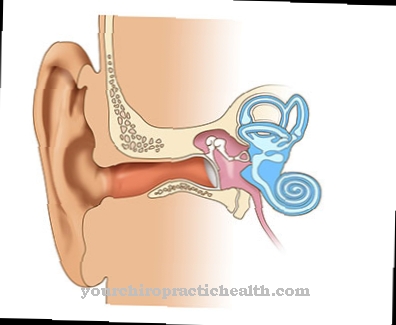
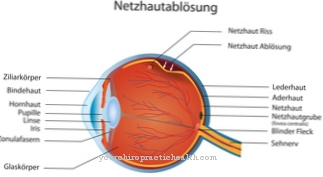

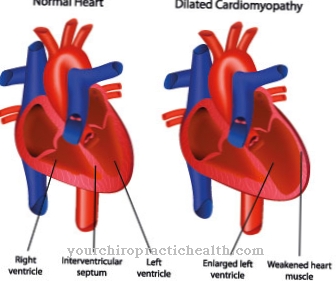
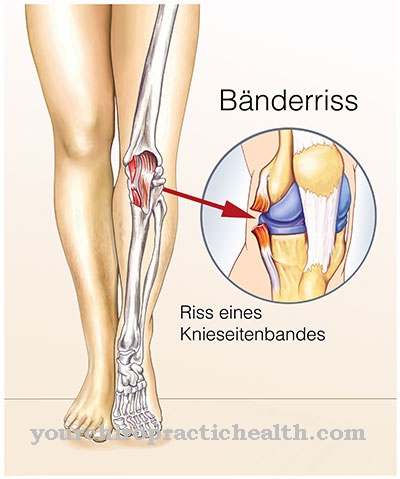
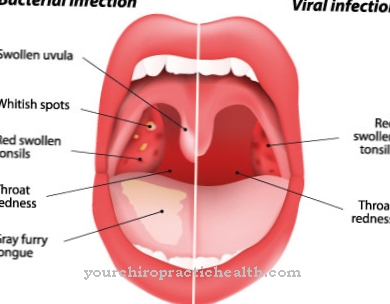










.jpg)







.jpg)


